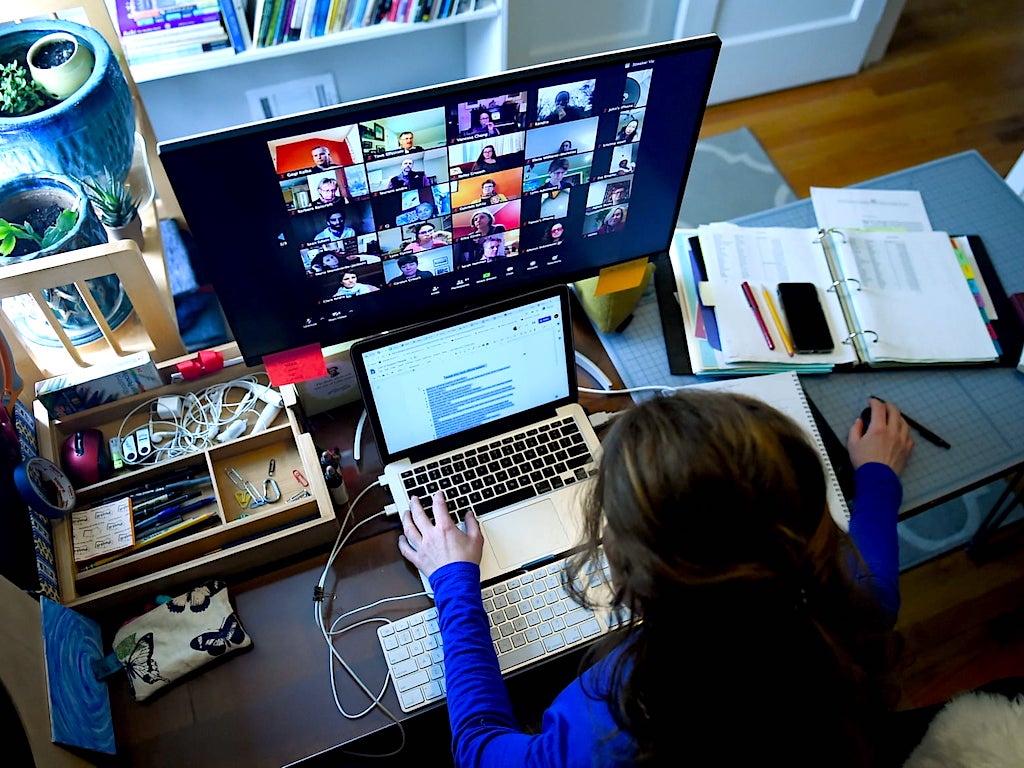Edition: May 9th, 2021
Curated by the Knowledge Team of ICS Career GPS

Excerpts from article by Daniel Colombo, published in Entrepreneur.com
As a result of the COVID-19 pandemic, the use of video calling platforms has soared. This has left many of us exhausted.
A team of researchers from Stanford University investigated the psychological consequences of spending several hours in front of the most popular video calling platforms, including Zoom.
Here are the 4 reasons – identified by the Stanford Study – that lead to video calling fatigue, as well as some tips to overcome these issues:
1. Excessive eye contact
To be constantly looking at a screen, where people are moving and, at the same time, focusing on details, expressions, the quality of communication and the tasks themselves, is usually exhausting.
Also, the size of the faces can cause discomfort: there are faces in the foreground, and others further away; some with more light and others almost in semi-darkness. If you are in a one-to-one conversation, what the platform simulates is a size that would like to assimilate as if the participants were face to face. What happens is that the brain interprets this as an intense situation, and generates hyperarousal (Hyperarousal is a primary symptom of post-traumatic stress disorder. It occurs when a person’s body suddenly kicks into high alert as a result of thinking about their trauma.)
Tools
Reduce the dimension of the faces, and go for the panel view, where both the participants’ windows are balanced, or the gallery view where all the windows are fairly equally aligned.
If the other people are not well framed, you can request them to modify the angle slightly to be better visible.
Also, remember that smiling and showing empathy, making gestures to reaffirm concepts and show closeness beyond being in virtual form, are highly recommended to cross the invisible barrier that distances you from the others.
2. Seeing yourself all the time
In video calls there is a window where you are always in view. There are several studies that claim that when you see a reflection of yourself, you become more critical of yourself. That is why it is exhausting to be watching each other on screen all the time, every day.
Tools
Until the platforms implement the automatic function of hiding only you while you are in a video call, you can do it manually. In many platforms, you’ll find the option of hiding your own view, which will help you resist the temptation to look at yourself on the monitor while you participate in a meeting/discussion. Also, at certain times when it is feasible, turning off the camera is also an option. You can let others know that you are present, albeit without video.
3. Reduced natural human mobility
Another consequence is that you need to be present all the time in front of the screen. Cameras offer a set framing space, and you will generally be sitting in front of the camera.
Tools
If you are the one who exhibits, you can do it standing up, with a plane quite close to the camera at the level of your eyes, so that others can see you well, and, at the same time, you can move within the frame and gesture. If you attend a meeting, you can also do it standing up, or taking a seat on a high stool, which is not the same as being rigid in a chair.
Remember to take breaks every 45 minutes: with at least 15 dedicated to moving, distracting yourself and changing spaces to regain energy and change the air.
4. Need for extra cognitive attention
There is an extra cognitive effort during video calls. For example, to express that you agree, you exaggerate the affirmative gesture with your head, or raise your thumb very visibly, and even respond with the virtual reaction buttons on the platforms. This adds cognitive loads and it takes a lot of mental effort to communicate.
Tools
During long meetings, take breaks – being present only with the audio function at times. Also, move to another place after sometime, while you continue listening.
Doing stretches, neck rotations, breathing exercises, taking notes on paper, making outlines of what is being explained, etc., are some ways to be more available without being stagnant.
(Disclaimer: The opinions expressed in the article mentioned above are those of the author(s). They do not purport to reflect the opinions or views of ICS Career GPS or its staff.)




Very helpful!
Thanks, Mrs Kapoor!